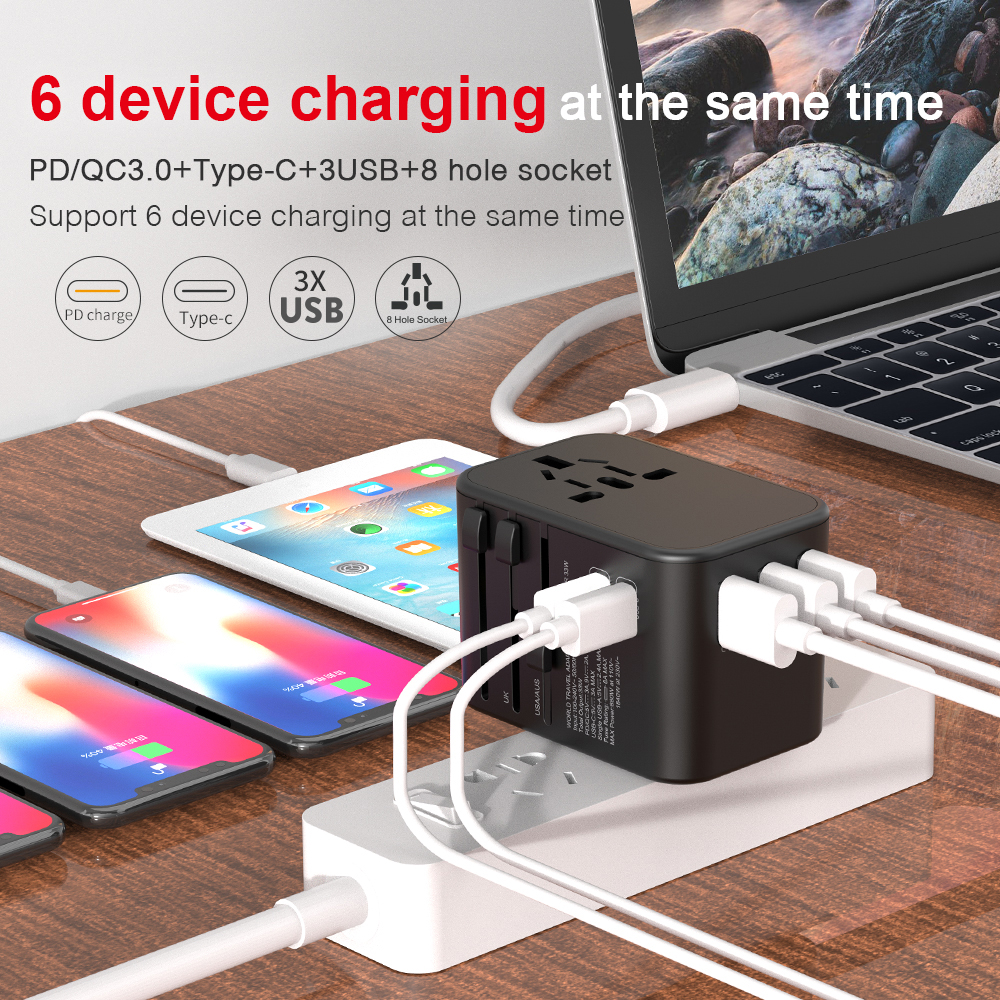Industry news
USB Wall Socket Adapters: The Ultimate Guide to Modern Charging Solutions
Writer: admin Time:2025-07-15 13:42:40 Browse:170℃
What Is a USB Wall Socket Adapter and Why Do You Need One?
Ever fought over sockets with family members, each needing to charge a phone or laptop? A USB wall socket adapter solves this. It eliminates the clutter of chargers, turning one outlet into a multi-device charging station.

Key Features of High-Quality USB Wall Socket Adapters
USB Port Count: Most have 2-4 ports, but premium models offer 6. This matters for households with multiple devices.
Fast Charging: Look for Qualcomm Quick Charge 3.0 or Power Delivery (PD) support, which charges phones 50% faster than standard USB.
Voltage Compatibility: Dual-voltage (100-240V) models work globally, while 120V-only versions are region-specific.
Safety Features: Overcurrent protection, surge protection, and childproof shutters prevent accidents.
How USB Wall Socket Adapters Compare to Traditional Chargers
Feature | USB Wall Socket Adapter | Traditional Charger + Standard Socket |
Clutter | Minimal (no extra chargers) | High (multiple chargers and cords) |
Charging Speed | Often includes fast-charging ports | Depends on the charger (may be slower) |
Device Capacity | 2-6 USB devices + 1-2 AC devices | 1 USB device + 1 AC device (per charger) |
Installation | Requires basic electrical work | Plug-and-play |
Long-Term Cost | Higher upfront, lower over time | Lower upfront, higher if buying multiple chargers |
Step-by-Step Guide: Installing a USB Wall Socket Adapter
1. Turn Off Power: Locate your home’s circuit breaker and switch off power to the target socket. Use a voltage tester to confirm it’s off.
2. Remove the Old Socket: Unscrew the faceplate and remove the screws holding the old socket in place. Gently pull it out to access the wires.
3. Identify Wires: You’ll see live (black), neutral (white), and ground (green/bare copper) wires. Note their connections.
4. Connect the New Adapter: Attach the live wire to the “L” terminal, neutral to “N,” and ground to the ground terminal. Follow the adapter’s instructions—some use color-coded screws.
5. Secure and Test: Push the adapter into the wall, screw on the faceplate, and turn the power back on. Plug in a device to check if it charges.
Common Mistakes to Avoid With USB Wall Socket Adapters
My Experience: How a USB Wall Socket Adapter Transformed My Home Office
Compatibility: Which Devices Work With USB Wall Socket Adapters?
Smartphones (iPhone, Android)
Tablets (iPad, Samsung Galaxy Tab)
Smartwatches (Apple Watch, Fitbit)
Wireless earbuds and speakers
Digital cameras and portable game consoles
Future Trends in USB Wall Socket Adapters
Frequently Asked Questions About USB Wall Socket Adapters
Can a USB wall socket adapter charge a laptop?
Yes, but only if it has a USB-C PD port with at least 30W output. Most laptops need 45W+—check the adapter’s specs.
How many devices can a USB wall socket adapter charge at once?
It depends on the model. Basic adapters handle 2-3 devices; premium ones (with 4+ USB ports) can charge 5-6, as long as total current stays under 10A.
Do USB wall socket adapters work with international voltage (220V)?
Some do. Look for “100-240V” on the label—these work globally. 120V-only models are for North America and won’t work in 220V countries like Germany.
Is it safe to install a USB wall socket adapter myself?
If you’re comfortable with basic electrical work (turning off breakers, connecting wires), yes. Otherwise, hire a licensed electrician—safety first.
CATEGORIES
LATEST NEWS
- What are the differences in plugs (chargers) among countries around the world?
- Answers to frequently asked questions by customers
- Worldwide Plug Adapter with Fast Charging for Singapore South Korea
- The Ultimate Universal Travel Adapter with USB-C for Business Trips
- Choosing a Travel Plug Adapter for Germany France Business Trips
CONTACT US
WhatsApp: xxxxxx
Phone: 18128986700
Email: zhozuoplug@hotmail.com
Add: Dongguan City, Guangdong Province, China